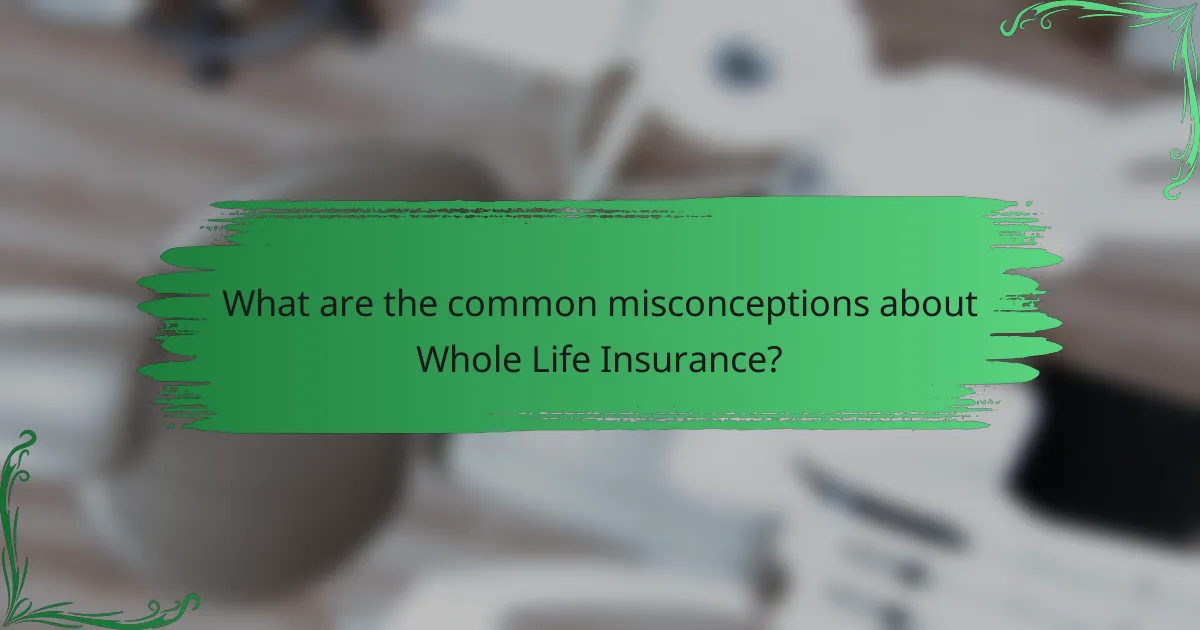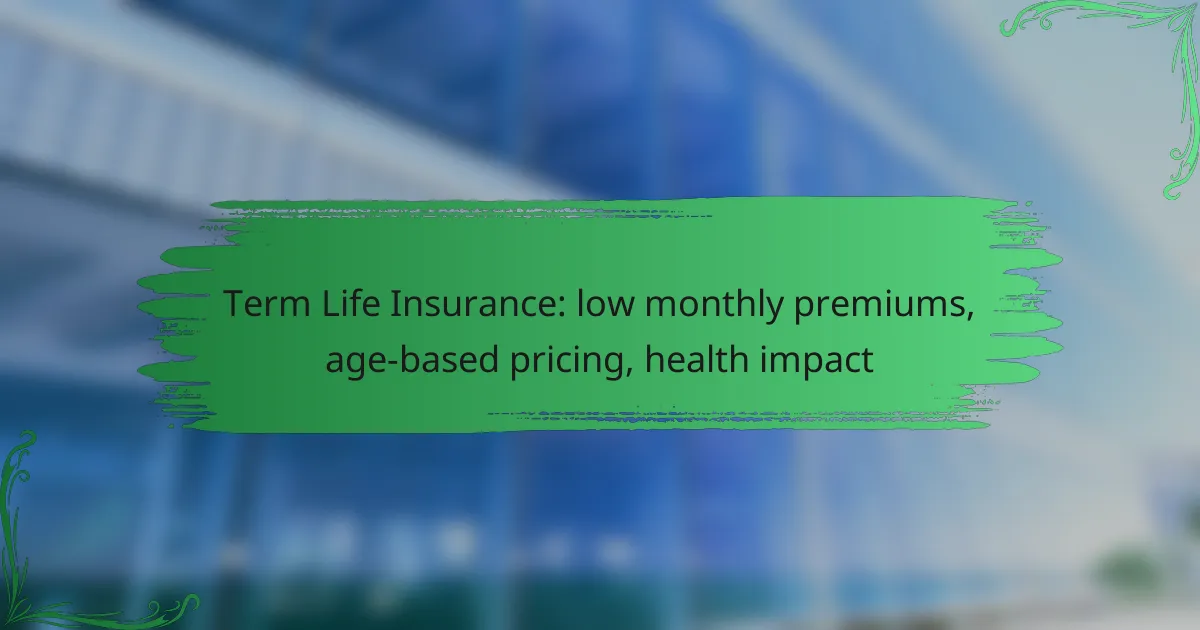Whole life insurance provides lifelong coverage with the added benefits of cash value growth and a guaranteed payout upon death. While premiums are higher compared to term insurance, the policy accumulates savings that can be accessed during the policyholder’s lifetime, making it an attractive option for those seeking both financial security and investment potential.

What are the benefits of Whole Life Insurance in the UK?
Whole life insurance in the UK offers several key benefits, including a guaranteed payout upon death, cash value growth, and fixed premium payments. These features make it a popular choice for individuals seeking long-term financial security and investment opportunities.
Guaranteed payout upon death
Whole life insurance guarantees a payout to beneficiaries upon the policyholder’s death, providing financial security for loved ones. This payout, known as the death benefit, is typically tax-free and can help cover expenses such as mortgage payments, education costs, or funeral expenses.
When selecting a policy, consider the amount of coverage needed to ensure that your beneficiaries are adequately protected. It’s advisable to review your coverage periodically to align with changing financial circumstances.
Cash value growth over time
Whole life insurance policies accumulate cash value over time, which grows at a guaranteed rate. This cash value can be accessed through loans or withdrawals, providing a source of funds for emergencies or other financial needs.
The growth of cash value is typically slow in the early years but can increase significantly over the life of the policy. It’s important to understand that accessing cash value may reduce the death benefit and could incur fees or interest charges.
Fixed premium payments
With whole life insurance, premium payments remain fixed throughout the life of the policy. This predictability allows policyholders to budget effectively without worrying about increasing costs as they age or if their health declines.
Choosing a policy with fixed premiums can be beneficial for long-term financial planning. However, initial premiums may be higher compared to term life insurance, so it’s essential to weigh the benefits against your current financial situation.
Tax advantages on cash value
The cash value growth in a whole life policy is tax-deferred, meaning you won’t pay taxes on the growth until you withdraw it. Additionally, the death benefit is generally paid out tax-free to beneficiaries, providing further financial advantages.
Understanding the tax implications of your whole life insurance policy can help you make informed decisions about withdrawals and loans. Consider consulting a tax professional to navigate the specific tax regulations applicable in the UK.

How do Whole Life Insurance premiums compare?
Whole life insurance premiums are generally higher than those of term insurance due to the lifelong coverage and cash value component. While term insurance provides coverage for a specific period, whole life policies build cash value over time and guarantee a payout upon death.
Higher premiums than term insurance
Whole life insurance typically has premiums that are significantly higher than term insurance premiums. This is because whole life policies offer lifelong coverage and a savings component, whereas term policies only provide coverage for a set term, such as 10, 20, or 30 years. For example, a whole life policy might cost several hundred to a few thousand dollars annually, while a comparable term policy could be a fraction of that amount.
The higher cost of whole life insurance can be justified by the benefits it offers, including guaranteed death benefits and the ability to accumulate cash value that can be borrowed against or withdrawn. This makes whole life insurance a more complex financial product than term insurance.
Factors affecting premium rates
Several factors influence the premium rates for whole life insurance, including the insured’s age, health, and lifestyle choices. Younger individuals generally pay lower premiums, while older applicants may face higher costs due to increased health risks. Additionally, pre-existing health conditions can lead to higher rates or even denial of coverage.
Other factors include the insurance company’s underwriting criteria, the policy’s face value, and the chosen payment structure. For instance, opting for a policy with a higher face value or a shorter payment term can increase premiums. It’s essential to compare quotes from multiple insurers to find the best rates and terms that fit your financial situation.

What is the cash value growth in Whole Life Insurance?
The cash value growth in whole life insurance refers to the accumulation of savings within the policy, which can be accessed during the policyholder’s lifetime. This growth is typically guaranteed and increases over time, providing a financial resource in addition to the death benefit.
Accumulation of cash value
Whole life insurance policies build cash value at a steady pace, often starting in the first few years of the policy. A portion of each premium payment contributes to this cash value, which grows tax-deferred. Policyholders can borrow against this cash value or withdraw funds, although doing so may reduce the death benefit.
Typically, cash value accumulation can take several years to become significant, with many policies reaching a meaningful amount after a decade or more. It’s essential to review the specific terms of your policy, as different insurers may have varying growth rates and structures.
Interest rates and growth potential
The cash value in whole life insurance generally grows at a guaranteed interest rate, which can range from low to mid-single digits. Some policies may also offer dividends, which can enhance growth but are not guaranteed. Understanding the interest rate structure is crucial for evaluating the potential growth of your cash value over time.
When comparing policies, consider both the guaranteed interest rate and any potential dividends. This can help you assess the overall growth potential and make informed decisions about your insurance investment. Avoid policies with overly complex terms that obscure how cash value is calculated and grows.

How to choose the right Whole Life Insurance policy?
Choosing the right whole life insurance policy involves evaluating your financial goals, understanding the benefits of cash value growth, and comparing different providers. It’s essential to consider factors like premium costs, guaranteed payouts, and how these align with your long-term financial plans.
Assessing financial goals
Start by identifying your financial objectives, such as providing for dependents, covering debts, or accumulating savings. Whole life insurance can serve multiple purposes, including a safety net for loved ones and a vehicle for cash value growth.
Consider how much coverage you need and the premium you can afford. Premiums for whole life insurance are typically higher than term life insurance, so ensure that the policy fits within your budget while meeting your financial goals.
Comparing providers like Aviva and Legal & General
When comparing providers such as Aviva and Legal & General, examine their policy features, premium rates, and customer service ratings. Both companies offer whole life insurance, but their terms and benefits may vary significantly.
Look for key differences in cash value growth rates, guaranteed payouts, and any additional riders or benefits that may be available. Reading customer reviews and consulting financial advisors can help you make an informed choice that aligns with your needs.

What are the alternatives to Whole Life Insurance?
Alternatives to whole life insurance include various types of life insurance policies that cater to different financial needs and preferences. These alternatives often come with different premium structures, coverage durations, and cash value growth options.
Term Life Insurance
Term life insurance provides coverage for a specified period, typically ranging from 10 to 30 years. It offers lower premiums compared to whole life insurance, making it an attractive option for those seeking affordable coverage without the cash value component.
However, once the term expires, the policyholder must either renew the policy at a higher rate or lose coverage altogether. This type of insurance is ideal for individuals who need temporary protection, such as covering a mortgage or supporting dependents during their working years.
Universal Life Insurance
Universal life insurance combines flexible premiums with a cash value component that grows based on interest rates. Policyholders can adjust their premium payments and death benefits, allowing for more personalized coverage compared to whole life insurance.
This flexibility can be beneficial for those whose financial situations may change over time. However, the cash value growth is not guaranteed and can fluctuate, so it’s essential to monitor the policy’s performance regularly.
Variable Life Insurance
Variable life insurance allows policyholders to invest the cash value in various investment options, such as stocks and bonds. This can lead to potentially higher returns, but it also comes with increased risk, as the cash value and death benefit can decrease if investments perform poorly.
This type of insurance is suitable for individuals comfortable with market fluctuations and looking for growth potential. It’s crucial to understand the investment options and associated fees to make informed decisions about this policy type.

What are the common misconceptions about Whole Life Insurance?
Whole life insurance is often misunderstood, leading to misconceptions about its costs, benefits, and structure. Many people believe that the higher premiums are not justified by the cash value growth and guaranteed payout features.
Misunderstanding cash value
One common misconception is that the cash value of a whole life insurance policy is readily accessible without any consequences. While it does accumulate over time, accessing this cash value often involves taking out a loan against the policy, which can reduce the death benefit if not repaid.
Another point of confusion is the rate of cash value growth. The growth is typically slow in the early years, often only a small percentage of the premium paid. Policyholders should expect to see significant cash value accumulation only after several years of consistent premium payments.
To maximize the benefits of cash value, consider the policy’s dividend options and how they can enhance growth. Regularly reviewing the policy with an insurance agent can help clarify how the cash value works and what to expect over time.



